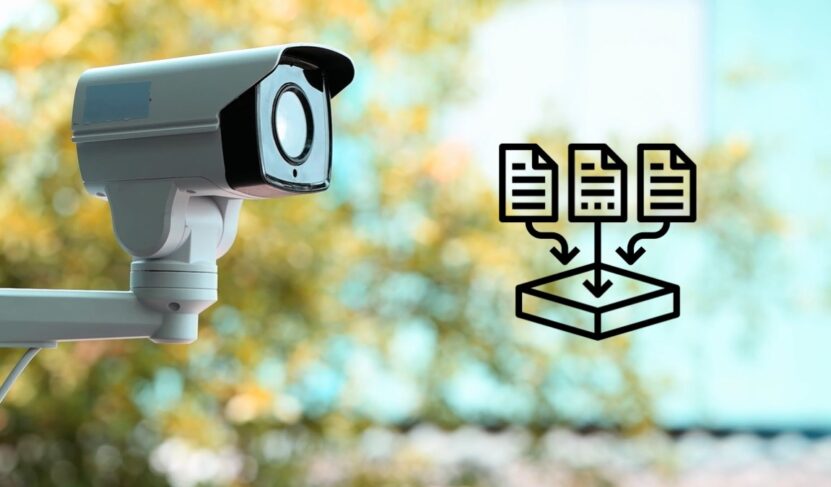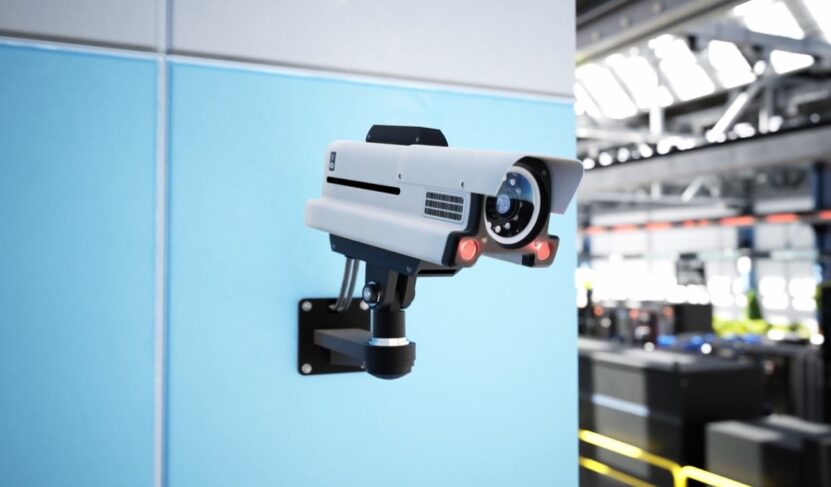IP (Internet Protocol) cameras have become increasingly popular for both residential and commercial security applications. Their ease of use, remote accessibility, and high-quality video streams make them an attractive choice for many security-conscious individuals and businesses alike. However, with the rising adoption of IP cameras comes the question of data usage: how much data does an IP camera use?
In this comprehensive guide, we’ll explore the factors that influence IP camera data usage and provide you with the tools to estimate bandwidth consumption for your specific camera setup. Our goal is to help you make informed decisions about your camera system and optimize its performance without sacrificing security or overloading your network.
Factors Influencing IP Camera Data Usage

Resolution
One of the primary factors affecting an IP camera’s data usage is the resolution at which it records video. Resolution refers to the number of pixels that make up an image. The higher the resolution, the more pixels there are, resulting in a clearer, more detailed image. Common resolutions for IP cameras include 720p (1280×720 pixels), 1080p (1920×1080 pixels), and 4K (3840×2160 pixels).
Higher resolutions produce larger video files, which consume more bandwidth when transmitted over a network. For example, a 4K camera will use significantly more data than a 720p camera, even if all other factors are equal.
Frame Rate
The frame rate, measured in frames per second (fps), is another critical factor that impacts IP camera data usage. A higher frame rate results in smoother video playback but also generates more data. Typical frame rates for IP cameras range from 5 to 30 fps, with 30 fps being the standard for real-time video.
Video Compression
To help reduce data usage and ease network congestion, most IP cameras employ video compression techniques. The two most common video compression standards used by IP cameras are H.264 and H.265. These codecs compress video files by data, making it easier to transmit and store them without a significant loss in quality.
H.265, also known as High-Efficiency Video Coding (HEVC), is a newer and more efficient compression standard that can reduce bandwidth consumption by up to 50% compared to H.264. However, not all devices support H.265, so compatibility with your IP camera and viewing equipment is essential.
Motion Detection and Recording Modes
Another factor that influences an IP camera’s data usage is the recording mode. Some cameras record continuously, while others use motion detection to trigger recording only when activity is detected. Cameras that utilize motion detection will generally use less data, as they’re not recording and transmitting video continuously.
Moreover, some IP cameras offer advanced features, such as object recognition, facial recognition, or audio detection, which can further reduce data usage by triggering recording only when specific events occur.
Number of Cameras
Finally, the number of cameras in your IP camera system will directly impact the overall data usage. Each additional camera on your network will contribute to the total bandwidth consumption, so it’s essential to consider your network’s capacity when planning a multi-camera setup.
How to Estimate IP Camera Bandwidth Consumption
Example Calculations
To estimate your IP camera’s bandwidth consumption, you can use the following formula:
- Bandwidth (Mbps) = Resolution (MP) x Frame Rate (fps) x Compression Factor (CF)
- The Compression Factor depends on the video codec used. For H.264, a typical CF value ranges from 0.015 to 0.035, while for H.265, it ranges from 0.007 to 0.018.
- For example, let’s calculate the bandwidth consumption for a 1080p camera recording at 30 fps using H.264 compression:
- Bandwidth (Mbps) = (2.1 MP) x (30 fps) x (0.025 CF) = 1.575 Mbps
Remember that this is an estimate, and actual bandwidth consumption may vary depending on other factors, such as scene complexity and camera settings.
Tools and Resources
There are online tools and calculators available to help you estimate IP camera bandwidth consumption more accurately. These calculators often take additional factors into account, such as scene complexity and the amount of motion in the video feed. Some popular calculators include:
- Axis Communications’ Design Tool
- IP Video System Design Tool by JVSG
- Bosch’s Video Security and Bandwidth Calculator
Tips for Reducing IP Camera Data Usage

Adjusting Camera Settings
If your IP camera system consumes too much bandwidth, you can make adjustments to reduce data usage:
- Lower the resolution: Reducing the resolution will decrease the amount of data produced by the camera, but it may also result in less detailed images.
- Decrease the frame rate: Reducing the frame rate will lower data usage but may lead to choppier video playback. Determine the minimum acceptable frame rate for your specific use case.
- Use a more efficient compression codec: If your camera and viewing equipment is compatible, consider switching from H.264 to H.265 to reduce bandwidth consumption.
Upgrading Network Infrastructure
If your network is struggling to handle your IP camera system’s bandwidth demands, consider upgrading your network infrastructure:
- Increase internet speed: Consult with your internet service provider (ISP) about upgrading to a faster plan to accommodate the additional bandwidth requirements.
- Use wired connections: Whenever possible, use wired connections (Ethernet) instead of Wi-Fi for a more stable and faster connection.
- Upgrade network equipment: Consider upgrading your router, switches, and other network components to handle higher bandwidth loads.
Leveraging Video Analytics
Some IP cameras come with built-in video analytics features that can help reduce data usage:
- Region of Interest (ROI): Focus on specific areas within the camera’s field of view and only record or transmit video when activity occurs within those regions, thereby reducing data consumption.
- Smart encoding: Some cameras use intelligent encoding algorithms that dynamically adjust the compression based on the scene’s content, reducing bandwidth consumption without compromising video quality.
- Video summarization: This feature allows the camera to generate a summary of the recorded events, requiring fewer data to be transmitted and stored.
Final Words
Understanding how much data an IP camera uses is crucial for ensuring optimal performance and avoiding network congestion. Factors influencing data usage include resolution, frame rate, video compression, recording modes, and the number of cameras in your system.
Estimating bandwidth consumption can be done using basic calculations or specialized tools, but it’s essential to remember that these are only estimates, and actual usage may vary. To reduce IP camera data usage, consider adjusting camera settings, upgrading network infrastructure, or leveraging video analytics features.
With this comprehensive guide in hand, you should be well-equipped to make informed decisions about your IP camera system, ensuring that you strike the perfect balance between video quality, security, and network performance.

